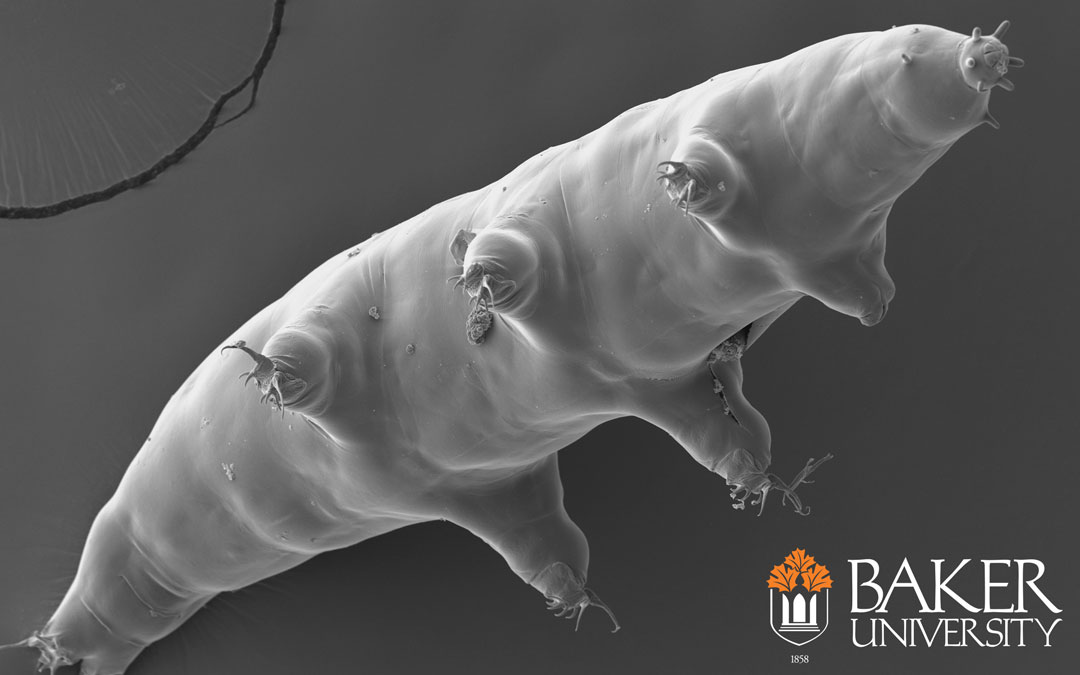Jul 16, 2019 | News
Undergraduate researchers discover new species living in Kansas

Baker University undergraduate students continue to discover new species of the microscopic organisms called tardigrades living in northeast Kansas. Tardigrades are referred to as “water bears” because their appearance is similar to that of a furry bear. They are tiny invertebrates, typically the size of the period at the end of this sentence, that live in the moss, lichen, and algae found on the trees, rocks, and streams around the world.
“I am very proud that our students had such a successful educational experience and outcome. Being able to discover new species is incredible and a great accomplishment for students,” said Baker University President Lynne Murray.
Baker undergraduate researchers work with tardigrades because they are a little-studied phylum on the tree of life. They thrive in aquatic habitats and are known for a stage of suspended life; when conditions become dry, they shrivel into a state known as cryptobiosis. Once it rains and conditions become moist again, tardigrades reconstitute and continue with life. Cryptobiotic tardigrades are thought to be nearly indestructible and are able to survive extreme environmental conditions such temperatures of -200º Celsius, absolute zero, 150º Celsius, vacuums and 6,000 PSI pressure. Thought to be one of the first legged animals to emerge from the sea, survivors of the last five extinctions on earth, tardigrades were the first multiple-celled animals to survive exposure to actual space, return to earth alive, and continue to live.
“Discovering, describing, and publishing five species of tardigrades new to science, four species new to North America, a new genus, a species not seen for 50 years, and expanding the known diversity of the phylum for the state of Kansas are significant scientific findings. Using the basic skills of research taught at Baker demonstrates that undergraduates have the ability to impact science,” said Dr. William Miller, director of research in biology and chemistry at Baker University.
Funded by an NSF research grant, the undergraduate research team lead by Miller and Dr. Scott Kimball, associate professor of biology, has found tardigrades in many locations and habitats in Kansas. Typically working in the Baker University Wetlands, a natural environmental study area, Baker’s students have also discovered tardigrades in local streams, high in the canopy of big trees, and in the feathers of birds.
The discovery of tardigrades on birds demonstrates an additional hypothesis to explain the intercontinental and global distribution patterns. For centuries, the only logical explanation for dispersal has been wind, but the recent documentation of water bears on birds by a Baker student helps explain tardigrades found in North and South America in a pattern that more closely matches bird migrations than nonexistent wind patterns.
